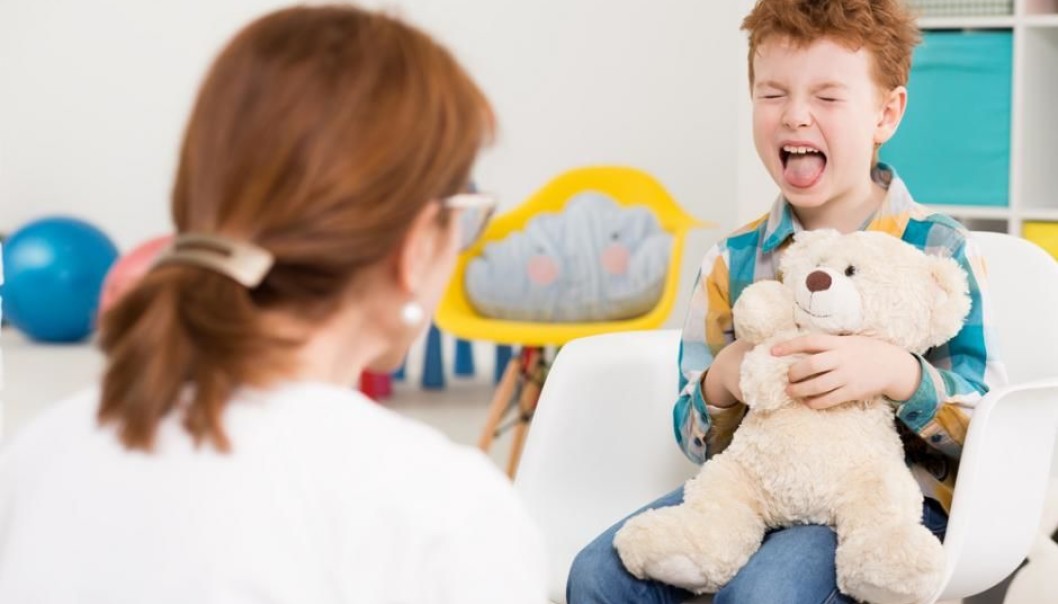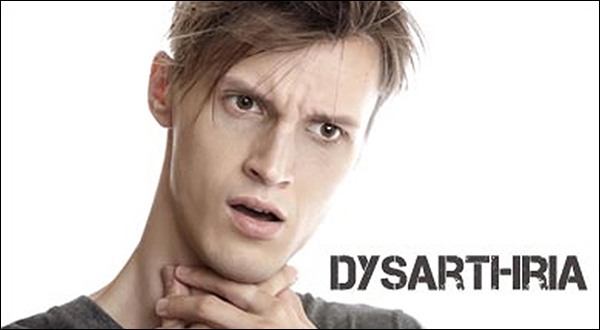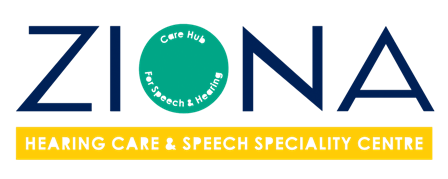SPEECH DISORDER

Speech Disorder
Speech is the communication / expression of thoughts and feelings in spoken words. A disorder affecting an individuals ability to produce normal speech is referred to as a speech disorder. A speech disorder may affect articulation (Phonetic / Phonological) Fluency ( Stuttering / Cluttering ) and or voice (tone, pitch, volume / speed)
According to American speech language hearing Association (ASHA), a language disorder is an impairment in comprehension of the use of spoken, written or other symbol system.
Reasons for speech and language disorder: Known cause
» Mental retardation
» Autism
» ADHD | Attention-deficit hyperactivity disorder
» Cerebral Palsy
» CLEF LIP / PALATE
» Stuttering
» Misarticulation
» Aphasia
» Dysarthria
TYPES OF SPEECH & LANGUAGE DISORDER
Mental Retardation
Mental retardation is a generalized disorder, characterized by significantly impaired cognitive unctioning and deficits in two or more adaptive behaviors with onset before the age of 18. Once focused almost entirely on cognition, the definition now includes both a component relating to mental functioning and one relating to individuals’ functional skills in their environment.
- To improve self help skills.
- Behavioral modification to reduce hyperactivity.
- Vocabulary building to improve speech and language development.

Autism
Autism spectrum disorder (ASD) is a range of complex neurodevelopment disorders, characterized by social impairments, communication difficulties, and restricted, repetitive, and stereotyped patterns of behavior. Autistic disorder, sometimes called autism or classical ASD, is the most severe form of ASD, while other conditions along the spectrum include a milder form known as Asperger syndrome, the rare condition called Rett syndrome, and childhood disintegrative disorder and pervasive developmental disorder not otherwise specified (usually referred to as PDD-NOS). Although ASD varies significantly in character and severity, it occurs in all ethnic and socioeconomic groups and affects every age group. Experts estimate that three to six children out of every 1,000 will have ASD. Males are four times more likely to have ASD than females.
- Interactive and creative play.
- Behavioral modification to reduce hyperactivity and to improve eye contact and attention – span.
- To improve socialization skills and social interaction.
- Vocabulary building.

ADHD | Attention-deficit hyperactivity disorder
Attention-deficit hyperactivity disorder (ADHD or AD/HD) is a neurobehavioral developmental disorder.
ADHD is primarily characterized by “the co-existence of attentional problems and hyperactivity, with each behavior occurring infrequently alone.”While signs may appear to be innocent and merely annoying nuisances to observers, “if left untreated, the persistent and pervasive effects of ADHD signs can insidiously and severely interfere with one’s ability to get the most out of education, fulfill one’s potential in the workplace, establish and maintain interpersonal relationships, and maintain a generally positive sense of self.
- Behavioral modification to reduce hyperactivity and improve attention span & eye – contact.
- Improve vocabulary and social use of language (Pragmatic skills)

Cerebral Palsy
The term cerebral palsy refers to any one of a number of neurological disorders that appear in infancy childhood and permanently affect body movement and muscle coordination but don’t worsen over time. Even though cerebral palsy affects muscle movement, it isn’t caused by problems in the muscles or nerves. It is caused by abnormalities in parts of the brain that control muscle movements.
- Oromotor exercise to improve muscle strength.
- Vocabulary building.
CLEF LIP / PALATE
If the cleft does not affect the palate structure of the mouth it is referred to as cleft lip. Cleft lip is formed in the top of the lip as either a small gap or an indentation in the lip (partial or incomplete cleft) or it continues into the nose (complete cleft). Lip cleft can occur as a one sided (unilateral) or two sided (bilateral). It is due to the failure of fusion of the maxillary and medial nasal processes (formation of the primary palate). A mild form of a cleft lip is a microform cleft. A microform cleft can appear as small as a little dent in the red part of the lip or look like a scar from the lip up to the nostril. In some cases muscle tissue in the lip underneath the scar is affected and might require reconstructive surgery. It is advised to have newborn infants with a microform cleft checked with a craniofacial team as soon as possible to determine the severity of the cleft.
- To reduce hypernasality/I to regulate oral air flow.
- Articulation correction to improve intelligibility of speech.
Stuttering
Stuttering is a speech disorder in which sounds, syllables, or words are repeated or prolonged, disrupting the normal flow of speech. These speech disruptions may be accompanied by struggling behaviors, such as rapid eye blinks or tremors of the lips. Stuttering can make it difficult to communicate with other people, which often affects a person’s quality of life.
- To reduce rate of speech.
- Effective counseling to improve self confidence and to avoid I overcome fear and anxiety.
- To learn how to avoid or prevent stuttering while speaking by making use of various techniques. How to avoid I overcome situational fear
Misarticulation
Disorders of the quality of speech characterized by the substitution, omission, distortion, and addition of phonemes.
- Improve intelligibility of speech by articulation correction i.e. Sounds difficult to be produced are taught.
Aphasia
Aphasia is a disorder that results from damage to portions of the brain that are responsible for language. For most people, these are areas on the left side (hemisphere) of the brain. Aphasia usually occurs suddenly, often as the result of a stroke or head injury, but it may also develop slowly, as in the case of a brain tumor, an infection, or dementia. The disorder impairs the expression and understanding of language as well as reading and writing. Aphasia may co-occur with speech disorders such as dysarthria or apraxia of speech, which also result from brain damage.
Based on the type of a Aphasia ( Broca’s, Wernicke’s, Global, Anomic etc.) and its characteristics, Therapy is planned and carried out.

Dysarthria
Dysarthria is a speech disorder that is due to a weakness or incoordination of the speech muscles. Speech is slow, weak, imprecise or uncoordinated. It can affect both children and adults. “Childhood dysarthria” can be congenital or acquired. It is often a symptom of a disease, such as cerebral palsy, Duchenne muscular dystrophy, myotonic dystrophy, Bell palsy. In both adults and children, it can result from head injury.
Oromotor exercise to improve muscle strength and to improve range of movement.
Improve speech intelligibility through articulatory skills.

INFORMATION ABOUT SPEECH THERAPY
SPEECH AND LANGUAGE DISORDERS AND DISEASES
When a person is unable to produce speech sounds correctly or fluently, or has problems with his or her voice, then he or she has a speech disorder. Difficulties pronouncing sounds, or articulation disorders, and stuttering are examples of speech disorders.
When a person has trouble understanding others (receptive language), or sharing thoughts, ideas, and feelings completely (expressive language), then he or she has a language disorder.These speech problems can occur either in childhood or among adults. Among adults, stroke, injuries, accidents etc can lead to loss of acquired speech and language. A stroke can result in aphasia, or a language disorder.
Both children and adults can have speech and language disorders. They can occur as a result of a medical problem or have no known cause
Definition of Speech Therapy
What is speech therapy?
Speech therapy is a methodical approach meant to improve or eliminate language and speech difficulties.
What’s the name of a person who provides speech therapy?
Speech Language Pathologist (SLP) is the person who provides the service. Commonly, SLP is known as “speech therapist”.
